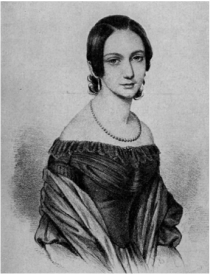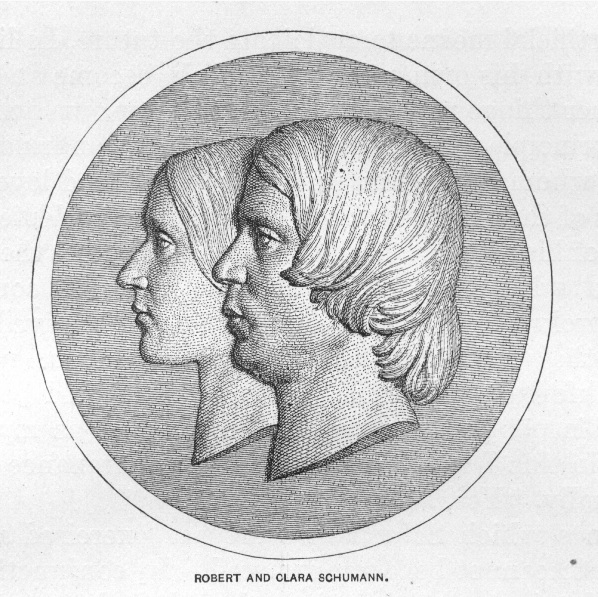|
Piano Trio No. 8 in G Major, K. 564, by Wolfgang Amadeus Mozart
I. Allegro II. Andante III. Allegretto The piano trio as we know it began with the trio sonata of the Baroque era, in which a solo instrument (the violin, for instance) would be accompanied by the basso continuo—often consisting of the harpsichord and a bass violin (now called the cello), which usually just reinforced the bass line of the keyboard part. Two major things occurred which transformed the trio sonata into the modern piano trio—the invention of the pianoforte by Bartolommeo Cristofori in 1709, and the birth of Mozart in 1756. The new piano allowed for more melodic lines and a greater dynamic range for keyboard players. Composers began to give the piano more dominance, promoting it as a solo instrument, rather than using it primarily for accompaniment. As the greatest pianist of his time, Mozart’s contribution to piano trios include not only his impeccable piano writing, but also the expansion of the cello part, giving it equal footing with the violin. Mozart’s last piano trio, K. 564, may have actually begun as a piano sonata. During the last year of his life, as Mozart struggled with poor health and crushing debts, he reworked the piano sonata into a piano trio as he hoped to capitalize on the growing popularity of chamber music. While perhaps written out of financial necessity rather than sudden inspiration, this work is impeccably crafted. The piano introduces the theme in the first movement, and skillfully passes to the other two instruments. The second movement, in theme and variations form, shows how effortlessly Mozart could transform a single melody to great dramatic effect. The final movement is a playful Rondo with dance-like grace and humor. “Old Photographs” from Constantinople, by Christos Hatzis Commissioned by the Gryphon Trio, “Old Photographs” is a single movement from Constantinople, a large multimedia production by Greek-Canadian composer Christos Hatzis. This unique work combines elements of the song cycle with the sacred cantata, as well as opera, chamber music and ballet while juxtaposing modern and ancient musical styles from Eastern and Western genres. In “Old Photographs”, that duality can be heard as it begins with a plaintive piano melody in the style of Robert Schumann, and gradually progresses into a wild tango. About his music, Hatzis writes: "I feel strongly that with my music, I am trying to force a tiny opening in the cloud that will allow His Light to shine through. At best, I am a follower, not a master, and my MASTER holds the patterns and patents of my being and work. So, in the best of circumstances, I can only think of myself as an imitator." Piano Trio No. 1 in C Minor, Op. 5, by Arthur Foote I. Allegro con brio II. Allegro vivace III. Adagio molto IV. Allegro comodo Arthur Foote was a member of the Boston Six, a group of elite American composers at the turn of the 20th century who sought to import the best of the European classical music tradition, and in turn, elevate America’s reputation in the arts. Other members of the group included John Knowles Paine, the first professor of music at Harvard University; Horatio Parker of Yale; Edward MacDowell, who taught at Columbia; George Chadwick, Director of the New England Conservatory; and Amy Beach, America’s first famous female composer. Foote graduated from Harvard, and was the first American composer to receive all of his training in the United States. He served as organist for the First Unitarian Church in Boston for 32 years, and helped found the American Guild of Organists. The lack of European pedigree probably hurt Foote’s career, but his Piano Trio in C minor certainly deserves a place among the great piano trios.
1 Comment
At the end of the Franco-Prussian War in 1871 until the beginning of World War I in 1914, France experienced a period of peace and prosperity which resulted in a flowering of science, literature, art, fashion, architecture, cuisine, and of course, music. Known as La Belle Epoch, “The Beautiful Era,” this period of French history saw the construction of the Eiffel tower for the 1889 World Fair, Louis Pasteur’s development of pasteurization and the rabies vaccine, early prototypes of the helicopter, and the invention of both the scooter and the moped. New railway lines transported people in and out of Paris, grand and spacious halls housed opera productions and art exhibits, and Paris became the center of culture and fashion that it is still famous for today.
Born in 1862, and admitted into the Paris Conservatoire at age 10, Claude Debussy’s musical career coincided with La Belle Epoch, and is one of the most famous composers from that era. The Piano Trio in G Major was composed in 1880, when Debussy was just 18 years old. At the time, he was living in Italy, where he was employed as Nadezhda von Meck’s music tutor for her daughters. He was also the member of a piano trio that Mme von Meck hired to perform every evening. (Von Meck is most famous for her association with Tchaikovsky, whom she sponsored for 13 years.) Though it was written before he had developed the impressionistic style that defines Debussy’s music (he hated the term, impressionist, incidentally), the piano trio gives a glimpse into the genius that he would become. Lost for 100 years, Debussy’s piano trio was not discovered until 1982, and it was finally published in 1986. Ernest Chausson was born in Paris in 1855 into a wealthy family. Immensely talented, Chausson studied law, literature and art before choosing to pursue music at the Paris Conservatoire. In 1881, when his entry was rejected from the prestigious Prix de Rome (a competition that would have validated his choice to study composition), Chausson withdrew from the conservatory, and began to write the Piano Trio in G Minor in an effort to prove to himself he had had not chosen the wrong career. Chausson later returned to his studies at the Paris conservatory, and in turn became a mentor to many younger composers, including Debussy. Sadly, Chausson’s life ended prematurely when he died in a bicycle accident at age 44, just when his music was starting to gain the recognition it deserved. Clara Wieck Schumann was one of the greatest pianists in the 19th century, a century that featured the likes of Frederick Chopin and Franz Liszt. Born to the famous soprano Marianne Tromlitz, and Friedrich Wieck, a prominent music teacher and businessman, Clara began her musical studies at a young age, and began concertizing by age nine. As a teenager, Clara fell in love with Robert Schumann, one of her father’s students, and a boarder at the Wieck home. Robert was nine years older than Clara, and her father greatly opposed their attachment. By law, Clara could not marry Robert without her father’s consent until she was 21 years old. Robert filed a lawsuit to marry Clara, which he finally won-- on the day before her 21st birthday.
Robert and Clara enjoyed many years of musical collaboration, and Robert encouraged Clara to compose. In their joint diary, he wrote, “Clara has composed a series of small pieces, which show a musical and tender ingenuity such as she has never attained before. But to have children, and a husband who is always living in the realm of imagination, does not go together with composing. She cannot work at it regularly, and I am often disturbed to think how many profound ideas are lost because she cannot work them out.” One year, Robert secretly published her songs, and surprised her with them on her birthday. Clara did not have confidence in herself as a composer, writing “I once believed that I possessed creative talent, but I have given up this idea; a woman must not desire to compose — there has never yet been one able to do it. Should I expect to be the one?" In spite of that, Clara also wrote, “Composing gives me great pleasure... there is nothing that surpasses the joy of creation, if only because through it one wins hours of self-forgetfulness, when one lives in a world of sound.” As their family grew (they had eight children!), and his health declined, Clara’s concertizing was put on hold, and she took over the entire management of the household. After his death in 1856, Clara resumed her musical career, devoting herself to the interpretation of her husband’s works until her own death in 1896. Robert Schumann was one the greatest composers of the Romantic period. As a child, Schumann possessed both music and literary talent, but after his father August Schumann, who supported his interest in music, passed away, his mother Johanna encouraged him to pursue a career in law. Schumann did study law, but at around 20 years old, he returned to his musical aspirations, studying piano with Friedrich Wieck, who saw great potential. During his studies, Schumann injured his right hand, ending his career as a pianist. He then began to focus his efforts on composing, often incorporating literary forms and themes, instead of traditional classical music forms. By this time, Schumann had fallen in love with Clara, and some of his compositions included musical cryptograms—the notes forming a code that represented his and Clara’s names. In 1834, he founded Die Neue Zeitschrift für Musik ("New Journal for Music"), for which he wrote numerous articles and reviews, and promoted up-and-coming artists. In 1840, Robert and Clara were finally able to marry. Inspired by his love and newfound happiness, Schumann composed 168 songs in that year alone, including Widmung, or “Dedication,” which he wrote in homage to Clara. Robert and Clara enjoyed a happy and productive marriage for many years, until symptoms of depression returned, along with tinnitus, hallucinations and anxiety. In 1854, he tried to commit suicide by throwing himself into the Rhine River, but he was rescued by boatmen. He asked to be admitted into an insane asylum, where he stayed for the rest of his life. He was not permitted to see Clara during this time but once, just two days before his death in 1856. Schumann’s music would likely have fallen out of favor and been lost if not for Clara, who worked tirelessly to promote his music by performing it, and editing it for publication, forever tying her legacy to his. |



 RSS Feed
RSS Feed